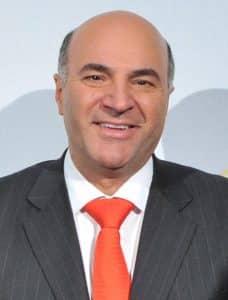According to a Time survey, about 75% of Americans over 40 are behind on saving for retirement. And 1 in 3 Americans doesn’t have a penny saved for retirement.
Even though some reports claim that the average savings of families close to retirement (between ages 56 to 61) is over $160,0000, the median is just $17,000.
The average number is skewed higher by a fewer number of very wealthy families, so the median figure is more representative of the average American family.
If you think you are behind the curve when it comes to saving for retirement, the good news is that it is never too late to learn how to create a budget.
But even after you build a budget, how do you stick with it?
How To Create A Budget
The secret to creating a budget that works is structure.
Your mission – should you choose to accept it – is to structure your spending so that you can save consistently.
How much you should save for retirement? We’ll get to that shortly.
But first, the goal is to identify how much you spend on day-to-day necessities and luxuries, and then plan to allocate a fixed amount, like clockwork, each month to your nest-egg.
Step 1 – Calculate your after-tax income
Your gross income matters but what really counts is your take-home earnings after you have paid Uncle Sam.
If you are a W-2 employee, taxes are taken out before you pocket a penny.
That’s right, Uncle Sam likes to get paid first.
Independent contractors and sole proprietor business owners may have a more tricky task figuring out how much they pocket monthly after taxes because income may be more variable.
If you are not sure, take a look at recent tax returns as a guide (assuming there have been no major changes to your financial situation in the meantime).
Step 2 – Divide Your Income
The next step is to divide your monthly income into three categories:
- Necessities
- Luxuries
- Savings
Food, rent or mortgage, health insurance, utilities, car insurance, and so on will fall into the necessities bucket for most people.
In the wants category are fun things like shopping, vacations, remodeling, and presents for loved ones.
The last bucket is the one you want to build up each and every month: savings.
You may be wondering at this point: how much should I save? And how much is enough for retirement?
The rule of thumb is that you will probably need savings that amount to at least 10 times your current income.
Some financial advisors recommend 12-15x your current income in order to provide even more cushion room.
A nest-egg in the $1 million to $1.5 million range is a financial goal that may be reasonable for most people but each person’s financial situation is unique.
If you previously worked in Silicon Valley for Facebook, Netflix, or Alphabet earning $200,000 per year or more, you might need twice the typical amount or more to maintain a similar standard of living during your retirement years.
Step 3 – Create A Commitment Device
Creating a budget is one thing, but sticking to it is quite another.
In fact, more than half of Americans (57%) have less than $1,000 in their savings accounts according to a GOBankingRates survey.
That number suggests that while the average person knows they should save more, committing to a budgeting plan is difficult.
To improve your chances of staying on track, you can create what behavioral economists call a commitment device, or a way to lock yourself into a plan of action that you might not want to do but you know is good for you.
Examples of commitment device methods include:

- Create a large obstacle to temptations. For example, tell a family member you will clean their house from top to bottom if you fail to follow through on your financial goals.
- Make your commitment public so your reputation may be affected if you fail.
An extreme example of a commitment device stems from Greek legend when Odysseus made a pact with his fellow sailors as they approached sirens that he would be bound to the mast so he could not break free.
Step 4 – Monitor Your Progress
Staying on track with your spending and saving each month is no mean feat.
Life inevitably throws you curveballs.
One month you may need to dip into your pockets to pay for school uniforms for kids or a present for a family member while another month you may spend more on vacation.
And during the holidays, you should plan to spend more than normal if you expect to exchange presents with loved ones.
Amid the spikes in spending, it can be easy to become despondent and give up on the idea of building your nest-egg.
But if you monitor your progress regularly and remember that you can always choose to get back on track at any moment, even if the past looks a little bleak, then you will stand a good chance of achieving your financial aims over the long-term.
What Apps Can Help You
To Create A Budget
Lots of budgeting apps are available these days to help you build a budget, but which ones are best?
Some budgeting tools will almost entirely automate the budgeting process for you so you can see precisely where you are spending money, whether on food, mortgage, entertainment, travel, or other categories.
Other budgeting apps will give you much more control, and will be a better fit if you like to be more hands-on.
Here are some of the best budgeting apps to get you started:
Personal Capital
Personal Capital has perhaps the best mobile app when it comes to budgeting.
It’s free to use and connects easily to your bank accounts so you barely need to lift a finger to see how you are doing financially.
Personal Capital can even manage your investments automatically as part of its (paid) robo-advisor service.
Tiller Money
If you ever ran into roadblocks trying to figure out how to create a budget in Excel, Tiller Money is almost certainly your best budgeting tool.
Tiller includes a bunch of spreadsheet templates that are customizable, sends you regular email updates and has perhaps the best customer support of any budgeting company.
Status Money
Status Money helps to answer common questions like:
- How much should a 30 year old have in savings?
- How much should you have in retirement at age 55?
If these are the types of questions you have been asking yourself, Status Money is your best bet for answers.
It compares your income, spending, and net worth to those of your peers, as well as others in your same age group and area.
| STATUS MONEY SPOTLIGHT | |
 InvestorMint Rating 4.5 out of 5 stars |
via Status Money secure site |
Mint
Mint was one of the earliest budgeting apps but it remains among the best.
It’s 100% free to use and provides insights into your spending patterns, so you can spot where you may be overspending or paying too much in interest.
Once Mint spots areas you can save money, it will display financial product offers. For example, Mint might spot that another credit card could save you money because it charges a lower rate.
| MINT SPOTLIGHT | |
 InvestorMint Rating 4.5 out of 5 stars |
via Mint secure site |
So, now you know which budgeting apps can help you track spending and income patterns, and the steps to creating a budget, but how much should you actually squirrel away each month?
Do you know how to read the candlesticks on your chart? If not don't worry. Chris Pulver created an ebook, Candlestick Cheat Sheet, that can teach you, in layman terms, the 10 most powerful candlestick patterns. It's a great start for those that are new to Forex and may want to trade on the conservative side when starting out.
Click here to download your copy now
The 10% Rule From
Mr. Wonderful Of Shark Tank
Kevin O’Leary, aka Mr. Wonderful, who became famous on the hit TV show, Shark Tank, recommends that instead of allocating money first to your needs, you deposit 10% of whatever you earn to savings and investing first.
By depositing 10% of all earnings immediately into a savings or investing account at a broker like thinkorswim or tastyworks, you can only spend money leftover.
This method is designed to avoid the temptation to spend money just because it is available.

Many other budgeting strategies from financial experts will advise you to deposit as much as 20% or more into savings after you have paid your bills.
And while they can be effective, you might be shocked to find just how well Mr. Wonderful’s 10% rule can be in growing your nest-egg.
Unlike some other approaches that require you to be disciplined about saving money after you have met your needs and wants, the 10% rule creates a commitment device from the moment you receive money.
Instead of trying to summon the discipline to save when your willpower is low at the end of the month after paying your bills like some other strategies advocate, you make an investment into your retirement account as soon as you receive money when your willpower is still high.
➤ Free Guide: 5 Ways To Automate Your Retirement
How To Create A Budget Plan
To maximize the chances of you creating a budget and sticking to it, prioritize your most important financial goals.
Financial Goal #1 – Create an Emergency Fund
Before you think about paying off student debt, mortgage debt, or credit card debt, put aside some cash for a rainy day.
You just never know when you need to repair a car dent, visit a hospital, or pay an insurance deductible.
If you are struggling to keep up, even a few hundred dollars in the cookie jar can make a big difference during your time of need.
Or if you can afford it, set aside a few thousand dollars or more so you have a financial cushion that gives you peace of mind.
Financial Goal #2 – Pay Off Bad Debt
In his famous book, Rich Dad, Poor Dad, Robert Kiyosaki classifies debt into two categories, good debt, and bad debt.
When you buy an investment property with borrowed funds, you can boost your returns on investment so the debt can be classified as good debt.
On the other hand, credit card debt payments demand that you pay high interest rates monthly so it is classified as bad debt.
With good debt, you may pay a low interest rate and get something for your money, for example ownership of a rental property.
However when you pay high interest charges to your credit card company, you get nothing in return.
You might as well be flushing those extra dollars down the drain.
> Related: Why Was My Credit Card Declined?
Financial Goal #3 – Grab The Free Money
Perhaps the easiest money available comes from matched 401(k) contributions offered by employers.
Some companies will match each dollar you contribute with an additional dollar.
Even if your company is not so generous and won’t match 1-for-1, the extra contributions all add up to free money in the end.
Don’t let them go to waste because any gains earned compound tax-free until you make withdrawals.
As the decades go by, employer contributions to your 401(k) tax-advantaged retirement account can add up to some serious savings.
How To Make A Budget:
The Bottom Line
The best way to create a budget that can stand the test of time is to calculate your after-tax income, budget for necessities, luxuries, and savings, and lock yourself into a commitment so you follow through on your budget plan.
By setting aside an emergency fund, paying off bad debt, and electing to receive matching contributions from your employer, you will be off to a great start.
And if possible, follow the 10% rule whereby you deposit 10% of all your earnings and monies you receive to savings and investing accounts.
Make sure to build in a little cushion room in case you overspend some weeks or months.
It’s better to treat those spikes as aberrations and get back on track the next day. Think of poor spending habits in the past as sunk costs.
There is nothing you can do about it them now but you can focus on better financial decisions from this day forward.
Do you have other financial tips about how to make a budget? Do you feel confident that you know how to create a budget and stick to it? If not, tell us what we missed!
>> Discover Retirement Planning For Dummies
>> How Much Does The Top 1% Make?
>> What Property Tax Deduction Can You Claim?
We could be facing one of the harshest economic challenges ever experienced thanks to an incompetent government and severe global unrest. If you aren't proactive, you could see yourself and your family become another financial casualty. But, the Inflation Survival Plan has you covered. Learn insider tips and tricks, IRS loopholes and more that will help your finances soar.
Take 15 Seconds to get the FREE Inflation Survival Plan and ensure your family's financial security.








